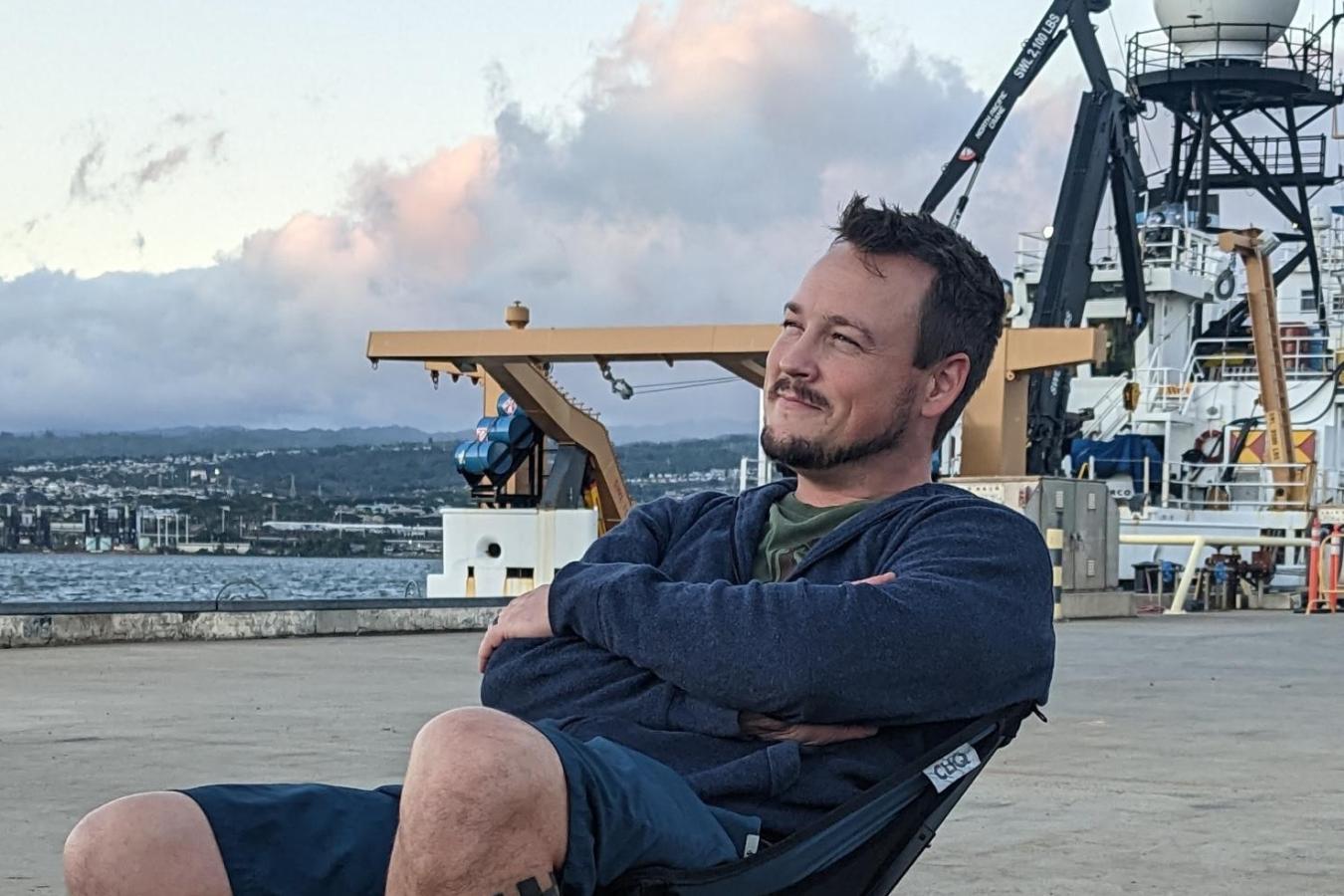
NOAA's professional mariners play a key role in improving our understanding of the ocean and atmosphere. They also bring a mariner's know-how to NOAA's scientific research by directly participating in the operation and handling of scientific gear in the tumultuous ocean environment. Meet Jason Dlugos, Second Assistant Engineer aboard NOAA Ship Oscar Elton Sette.
What is your role at NOAA and what do you do?
As the Second Assistant Engineer on NOAA Ship Oscar Elton Sette, based in Pearl Harbor, Hawaii, my roles include key operational tasks including monitoring the power generating plant, propulsion, fuel processing, maintaining the reverse osmosis watermaker for clean drinking water, and ensuring the sewage system functions smoothly. My responsibilities extend beyond ship operations though. I also handle necessary repairs and provide guidance and mentorship to my department, ensuring we all work effectively as a team to keep our vessel running efficiently and safely.
Where did you grow up?
My dad was in the Navy so I grew up all along the East Coast.
Where did you get your training and experience before joining NOAA?
This has been my first maritime job. I never received any formal training before starting as a Wiper in 2016, which is the entry level position for the Engine Department. Starting at the bottom and working up is known as “hawespiping.” From beginning as a wiper, I logged enough sea time to test for my QMED (Qualified Member of the Engine Department) Oiler and Junior Unlicensed Engineer licenses from the U.S. Coast Guard. After sailing on my QMED for the required time, I was able to apply to test for my Third Assistant Engineer License. Now I have my Second Assistant Engineer and will be applying to test for my First Assistant Engineer’s License next year.
Before my career with NOAA, I worked a wide range of jobs from automotive repair to ultrasonic nondestructive testing. All of the jobs from my former life helped me build a strong skill set that greatly benefited me when I transitioned to maritime. With my background, I knew that engineering was the path that I wanted to take.
What inspired you to work for NOAA Marine and Aviation Operations?
Science and biology was always a favorite subject in school and with my life on the East Coast, NOAA was well known to me because of hurricane season. When I learned that I can be a mariner AND work for NOAA, it was a no brainer. Before I joined NOAA, my girlfriend at the time, now wife and Chief Survey Tech on NOAA Ship Rueben Lasker, would tell me about the cool science that they were doing and fire me up even more about working for NOAA.
What was one of your favorite missions or experiences?
This is an easy one. My first monk seals project. On this project we do population counts of the endangered Hawaiian monk seal and transport the sick or injured seals to a rehabilitation facility on the Big Island in an effort to boost the population. It is one of our regular projects and involves us sailing to the Northwestern Hawaiian Islands and stopping at each of the islands and atolls, all of the way to Kure Atoll. The experience and beauty is mind blowing. On that first trip, we were fortunate enough to be able to pull into Midway Atoll and go ashore. Being a Navy brat and WWII history enthusiast, this was a dream come true. The beauty, the history, the wildlife, unreal. That will stick with me for the rest of my life.
What advice would you give to someone who wants to work for NOAA?
If you are new to maritime and want to join, begin by getting your TWIC (Transportation Worker Identification Credential) and Merchant Mariner Credential. If you are already a mariner, give it a try. You’ll have experiences that you won’t find elsewhere.
What do you like to do outside of work?
When we’re in port, I spend that time outdoors having adventures. As a passionate diver, I engage in technical scuba and closed circuit rebreather diving as well as freediving. If I’m not in the water, you can find me falling from the sky at my local dropzone or ripping around on my Onewheel.

